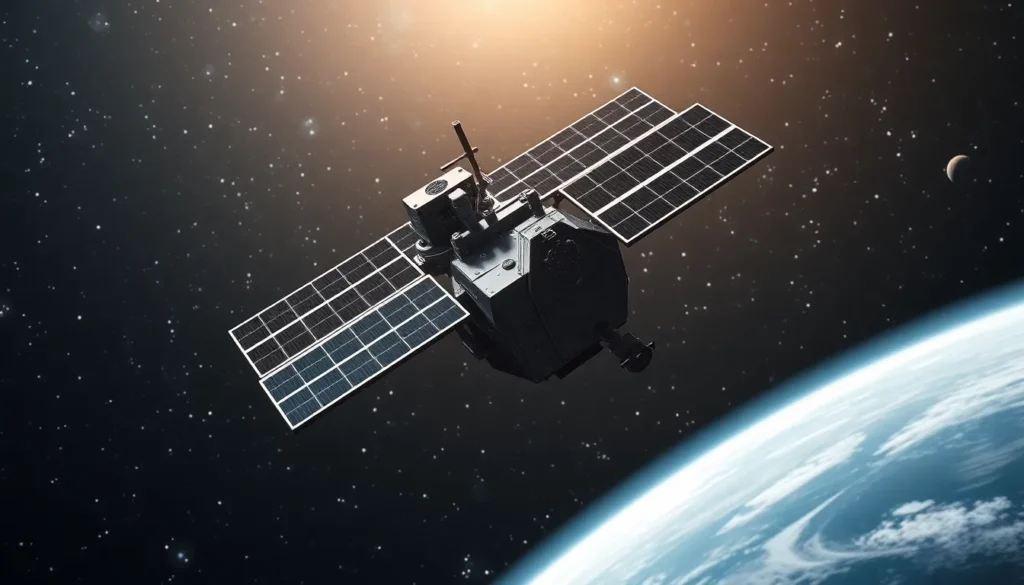Table of Contents
ToggleDeep space probes have revolutionized humanity’s understanding of the cosmos. These extraordinary machines venture far beyond Earth’s orbit, gathering invaluable data about distant planets, moons, and even the edges of our solar system. As they travel through the vastness of space, they provide insights that challenge our perceptions and spark our curiosity about the universe.
From Voyager’s iconic Golden Record to the recent Parker Solar Probe, these missions push the boundaries of technology and exploration. Each probe tells a unique story of discovery, unveiling secrets that have remained hidden for centuries. As scientists analyze the information collected, they gain a deeper appreciation for the intricate workings of our solar system and beyond.
Overview of Deep Space Probes
Deep space probes represent unprecedented technological achievements designed to explore the cosmos beyond Earth’s immediate vicinity. These unmanned vehicles venture into outer space, gathering critical data about celestial bodies, cosmic phenomena, and the fundamental nature of the universe.
Significant missions include:
- Voyager Program: Launched in 1977, the Voyager probes—Voyager 1 and Voyager 2—provide invaluable insights into the outer planets and interstellar space. Voyager 1, currently the farthest human-made object, offers data on the heliosphere and cosmic rays, while Voyager 2 has studied Neptune and Uranus.
- Parker Solar Probe: This mission aims directly at the Sun, launched in 2018. The probe approaches the Sun closely to study solar wind and solar magnetic fields. Data from the Parker Solar Probe enhances understanding of solar activities that influence space weather.
- New Horizons: Launched in 2006, New Horizons conducted a flyby of Pluto in 2015. This mission provided the first close-up images of Pluto and its moons, revealing details about their geology and atmosphere.
- OSIRIS-REx: Launched in 2016, OSIRIS-REx visits the near-Earth asteroid Bennu, collecting samples to return to Earth in 2023. It focuses on understanding asteroids’ role in the solar system’s formation and their potential for resource utilization.
These missions contribute significantly to advancing knowledge about planetary formation, asteroid composition, and solar dynamics. Data from deep space probes informs scientific theories and inspires future exploratory missions, reflecting humanity’s quest to unlock the mysteries of space.
Key Missions in Deep Space Exploration

Deep space probes have unveiled profound insights into our universe, with missions like Voyager and New Horizons leading the way in exploration and discovery.
Voyager Program
The Voyager Program, initiated in 1977, consists of two spacecraft, Voyager 1 and Voyager 2. These probes aim to study the outer planets and interstellar space. Voyager 1, now over 14 billion miles from Earth, provides critical data about the heliosphere and the interstellar medium. Voyager 2, the only spacecraft to have visited all four outer planets—Jupiter, Saturn, Uranus, and Neptune—offers unique information about their atmospheres, moons, and rings. Notably, both spacecraft carry the Golden Record, a message to potential extraterrestrial life. The Voyager Program has revolutionized planetary science and continues to send valuable data, further enriching our understanding of the cosmos.
New Horizons Mission
New Horizons, launched in 2006, represents a significant milestone in deep space exploration. This spacecraft conducted a historic flyby of Pluto on July 14, 2015, marking the first close encounter with this distant world. The mission delivered detailed images and data, revealing Pluto’s complex geology, active surface, and a thin atmosphere primarily composed of nitrogen. Following the Pluto flyby, New Horizons proceeded to study the Kuiper Belt object Arrokoth, focusing on its unique characteristics as a primitive building block of the solar system. This mission has expanded knowledge of icy bodies at the solar system’s edge and sharpened focus on the processes shaping planetary formation.
Technology Behind Deep Space Probes
Deep space probes utilize advanced technology to conduct long-range missions. These technologies ensure reliable data transmission, power efficiency, and resilience against harsh space environments.
Communication Systems
Communication systems enable deep space probes to transmit data back to Earth. High-gain antennas, such as those used in the Deep Space Network (DSN), facilitate long-distance communication. Probes often employ radio frequencies, ensuring signals can travel vast distances without significant degradation. The use of modulation techniques, like phase-shift keying, optimizes data transmission, enhancing message clarity. Error correction algorithms also play a crucial role, allowing data integrity even in noisy environments. Notable examples include the Voyager spacecraft, which use specialized communication systems to send vital information from over 14 billion miles away.
Power Sources
Power sources provide energy for deep space probes, often relying on radioisotope thermoelectric generators (RTGs). RTGs convert heat released by the decay of radioactive isotopes, producing reliable power for years. Probes like Voyager and New Horizons utilize RTGs, ensuring continuous operation far from the Sun where solar panels become ineffective. Some newer missions, such as the Mars 2020 rover, use solar panels, allowing for adaptability in different environments. Battery systems are also integrated, providing additional or backup power to ensure uninterrupted operations during potential sunlight fluctuations. These diverse power sources contribute significantly to mission longevity and functionality.
Challenges in Deep Space Exploration
Deep space exploration presents significant challenges that impact mission design and success. Key issues, such as distance, time, and environmental factors, demand careful consideration for effective operation and data collection.
Distance and Time
Distance impacts both communication and navigation. Signals from deep space probes take hours to reach Earth, complicating real-time operations. For instance, commands sent to Voyager 1 take about 22.5 hours to arrive, and data transmission can take even longer to process. Probes require autonomous systems to navigate without immediate instructions. Time also affects mission longevity, as prolonged exposure to space conditions can shorten operational lifespans. Many missions are planned for decades; for example, Voyager 1, launched in 1977, continues to send data over 45 years later.
Environmental Factors
Environmental factors include extreme temperatures, radiation, and microgravity. Deep space probes encounter temperatures that can range from -250°F in shadowed areas to 250°F in direct sunlight, necessitating robust thermal protection systems. Radiation levels are significantly higher than on Earth, increasing the risk of damaging electronic components. Probes must utilize shielding techniques to minimize radiation exposure. Additionally, microgravity environments create challenges for instruments to function optimally, impacting the accuracy of measurements taken by sensitive equipment. Addressing these factors is essential for successful exploration and data accuracy.
Future of Deep Space Probes
Future deep space probes promise to elevate our understanding of the universe even further. Emerging technologies and upcoming missions aim to expand the horizons of space exploration and unlock new scientific discoveries.
Upcoming Missions
Upcoming missions include key projects aimed at exploring the solar system and beyond.
- NASA’s Europa Clipper targets Jupiter’s moon Europa. Scheduled for launch in 2024, it will assess the moon’s ice-covered ocean and potential for life.
- James Webb Space Telescope (JWST), launched in December 2021, focuses on observing distant exoplanets and galaxies, enhancing our understanding of cosmic evolution and the formation of stars.
- Artemis program aims to return humans to the Moon by 2025. This initiative supports future Mars missions and contributes knowledge about lunar resources and environments.
- Mars Sample Return mission, led by NASA and ESA, plans to collect samples from Mars in the 2030s. It will deliver these samples to Earth for comprehensive analysis, potentially revealing signs of ancient life.
- Dragonfly mission, set to launch in 2027, will explore Saturn’s moon Titan. This rotorcraft will search for prebiotic chemical processes and assess the environment for possible signs of life.
Potential Discoveries
Potential discoveries from future missions could transform our comprehension of the cosmos.
- Life Beyond Earth: Probes investigating ocean worlds like Europa and Enceladus may uncover microbial life forms, offering insights into habitability beyond Earth.
- Planetary Formation: Missions observing the Kuiper Belt and asteroids may unveil the origins of planetary bodies, contributing to theories about the solar system’s evolution.
- Solar Dynamics: Probes like the Parker Solar Probe could reveal the mechanisms behind solar flares and coronal mass ejections, enhancing our understanding of solar influence on Earth.
- Exoplanet Atmospheres: JWST’s observations could identify chemical signatures in exoplanet atmospheres, providing indications of life-sustaining conditions in distant solar systems.
- Dark Matter and Energy: Future missions might investigate cosmic microwave background radiation, deepening knowledge about dark matter and dark energy’s roles in universal expansion.
Each upcoming mission holds the potential to reshape our understanding of the universe, driving advances in space science and exploration techniques.
Deep space probes are pivotal in expanding humanity’s understanding of the universe. Their groundbreaking missions reveal secrets of celestial bodies and enhance our grasp of solar system dynamics. As technology evolves and new missions are planned, the potential for discovery grows exponentially. Upcoming projects promise to deepen insights into planetary formation, solar activities, and the search for extraterrestrial life.
The challenges faced in deep space exploration underscore the ingenuity and resilience of human engineering. Each mission contributes valuable data that not only informs scientific theories but also inspires future generations. With every probe launched, humanity takes another step closer to unraveling the mysteries of the cosmos.







